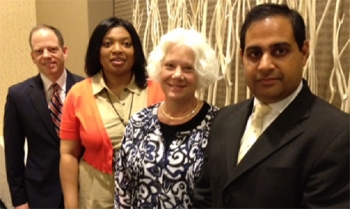Commerce’s NIST Announces $2 Million for Small Business Innovation Research
The Department of Commerce's National Institute of Standards and Technology (NIST) has awarded nearly $2 million in Small Business Innovation Research (SBIR) awards to 12 U.S. businesses. These awards provide funding to help companies develop technologies that could lead to commercial and public benefit.
"We are delighted by the high quality of SBIR proposals we received, and congratulate all the awardees," said Phillip Singerman, associate director for innovation and industry services at NIST. "Over the past year, NIST updated the solicitation process to focus on critical national priorities and provide maximum opportunities for businesses that are just starting out. With three-fourths of the Phase I recipients in business fewer than 10 years and two-thirds of them with 12 employees or fewer, the results of the solicitation demonstrate the success of that process."
NIST's SBIR program is a competitive funding opportunity that provides contracts to small businesses for federal research and development. In Phase I, small businesses can receive up to $90,000 to establish the scientific or technical merit or feasibility of ideas that support the commercial potential of their research. If after six months the Phase I awardees have accomplished their goals, they can compete for Phase II funding of up to $300,000 to continue their research and development efforts for up to two years.
Read more about the 12 winners and how NIST will provide technical assistance and direct assistance as allowed by the SBIR statute, as well as direct them to additional resources through NIST's Hollings Manufacturing Extension Partnership.








